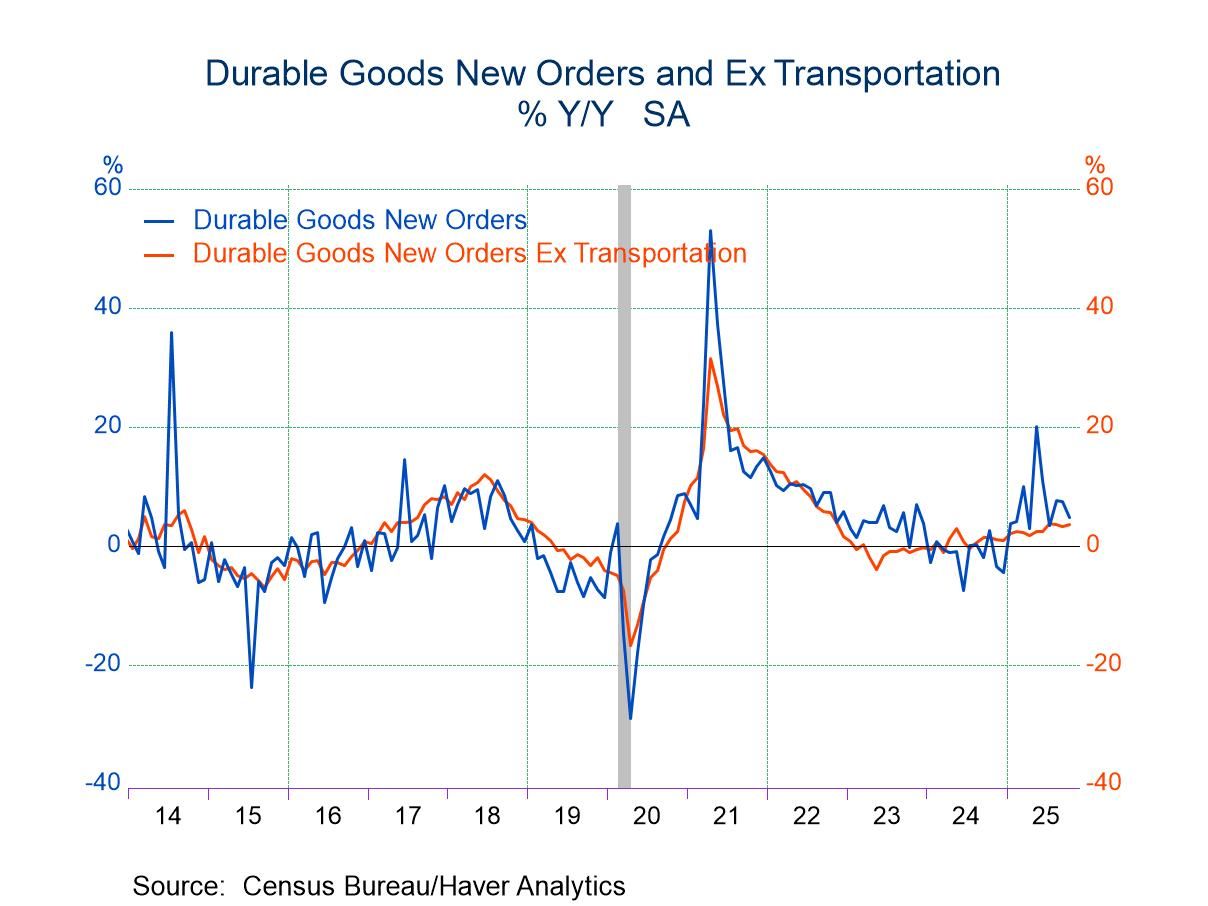Philly Fed Manufacturing Index Points to Continued Expansion in March
by:Sandy Batten
|in:Economy in Brief
Summary
- Headline index fell but unexpectedly remained in positive territory.
- First positive reading for new orders in five months; shipments continued to rise.
- However, employment continued to decline for fifth consecutive month.
- Six-month ahead expectations jumped to highest level since July 2021.


The Federal Reserve Bank of Philadelphia reported that its manufacturing sector Current Activity Diffusion Index slipped to 3.2 in March from 5.2 in February. However, the Action Economics Forecast Survey had expected a decline to -2.3. A reading above zero indicates that activity continued to expand in March. This month’s survey was conducted between March 11 and March 18.
The headline activity index reflects the answer to a single question. Haver Analytics calculates an ISM-adjusted general business conditions index from five key components using the same methodology as the national ISM index. This calculated index rose to 48.0 in March from 45.2 in February. While this was the highest reading since last August, it was the nineteenth consecutive month that the index has been below the 50 level that separates expansion from contraction, indicating that the manufacturing sector is still being challenged by tight monetary policy.
Major individual series mostly improved this month. New orders rose to 5.4 in March, their first positive reading in five months, from -5.2 in February. The shipments index posted its second consecutive positive reading at 11.4 in March, up from 10.7 in February. Unfilled orders edged above zero for the first time May 2022 to 1.0 from -11.7 in February. Inventories posted their first positive reading in six months, increasing to 4.4 from -2.8 in February. By contrast, delivery times remained in negative territory at -16.7 in March, up slightly from -21.1 in February, as 3.1% reported an increase while 19.9% reported a decrease in delivery times.
Job market conditions remained weak this month as indicated by another negative reading on employment at -9.6, though up slightly from -10.3 in February. Almost 4% of respondents reported increasing employment while 13.5% reported declines. The average workweek index slipped back below zero at -0.2 in March, its fifth negative reading in the past six months.
Inflation indicators continued to moderate. The prices paid index declined to 3.7 in March, its lowest reading since May 2020, from 16.6 in February. This reflected 13.6% of respondents reporting increased prices and 9.8% reporting a decline. The prices received index also slid in March, to 4.6, the lowest reading since last May, from 6.2 in February.
Future activity indicators rose, suggesting more widespread expectations for overall growth over the next six months. The headline index jumped to 38.6 in March from 7.2 in February. All of the major component indexes posted meaningful gains in March, led by jumps in both expected new orders and expected shipments. Expected orders rose to 49.9 in March, its highest reading since June 2021. Expected shipments increased to 43.6 in March, its highest reading since January 2022.
The diffusion indexes are calculated as the percentage of respondents indicating an increase minus the percentage indicating a decrease. The Philadelphia Fed data can be found in Haver’s SURVEYS database. The expectations figures are from the Action Economics Forecast Survey in AS1REPNA.


Sandy Batten
AuthorMore in Author Profile »Sandy Batten has more than 30 years of experience analyzing industrial economies and financial markets and a wide range of experience across the financial services sector, government, and academia. Before joining Haver Analytics, Sandy was a Vice President and Senior Economist at Citibank; Senior Credit Market Analyst at CDC Investment Management, Managing Director at Bear Stearns, and Executive Director at JPMorgan. In 2008, Sandy was named the most accurate US forecaster by the National Association for Business Economics. He is a member of the New York Forecasters Club, NABE, and the American Economic Association. Prior to his time in the financial services sector, Sandy was a Research Officer at the Federal Reserve Bank of St. Louis, Senior Staff Economist on the President’s Council of Economic Advisors, Deputy Assistant Secretary for Economic Policy at the US Treasury, and Economist at the International Monetary Fund. Sandy has taught economics at St. Louis University, Denison University, and Muskingun College. He has published numerous peer-reviewed articles in a wide range of academic publications. He has a B.A. in economics from the University of Richmond and a M.A. and Ph.D. in economics from The Ohio State University.






